- High wave is a 1-bar candlestick pattern that has very long upper and lower shadows and a small real body.
- It shows indecision in the market.
Statistics to prove if the High Wave pattern really works
Are the odds of the High Wave pattern in your favor?
How does the High Wave behave with a 2:1 target R/R ratio?
From our research the High Wave pattern confirms 42% of the time on average overall all the 4120 markets we analysed. Historically, this patterns confirmed within 3.5 candles or got invalidated within 3.1 candles. If confirmed, it reached the 2:1 R/R target 42.1% of the time and it retested it's entry price level 88.9% of the time.
Not accounting for fees, it has an expected outcome of 0.263 $/$.
It means for every $100 you risk on a trade with the High Wave pattern you make $26.3 on average.
Want to account for your trading fees? Have the detailled stats for your favorite markets / timeframes? Or get the stats for another R/R than 2:1?
🚀 Join us now and get fine-tuned stats you care about!
How to handle risk with the High Wave pattern?
We analysed 4120 markets for the last 59 years and we found 729 707 occurrences of the High Wave pattern.
On average markets printed 1 High Wave pattern every 21 candles.
For 2:1 R/R trades, the longest winning streak observed was 30 and the longest losing streak was 127. A trading strategy relying solely on this pattern is not advised. Anyway, make sure to use proper risk management.
Keep in mind all these informations are for educational purposes only and are NOT financial advice.
If you want to learn more and deep dive into candlestick patterns performance statistics, I strongly recommend you follow the best available course about it. Joe Marwood (who's a famous trader with more than 45 000 Twitter followers) created an online course called "Candlestick Analysis For Professional Traders" in his Marwood Research University. There he will take you through the extensive backtesting of the 26 main candlestick patterns. He then summarizes which one is THE best pattern. Do you know which one it is?
Remember, don't trade if you don't know your stats. Click here to signup to the course now!
A lot of candlestick traders don’t fully realize that each candlestick pattern tells a story about the market. This is surely the case with a high wave candlestick pattern signal.
This candlestick formation, like the spinning top and doji formations, indicates market indecisions. Thus, traders wouldn’t take the high wave candlestick as an entry signal. However, it can be a good signal that the market may be changing direction. There are various high wave candlestick patterns at the bottom or top of trends that are changing direction.
High wave is a candlestick pattern that has very long upper and lower shadows and a small real body. It indicates that the market is losing the direction bias that it had before the candle formed. If the real body is a doji rather than a small real body, it is a long-legged doji.
The high wave candlestick has a small real body, and it shows a stock that has uncertainties. The spinning top has small lower and upper shadows, while the high wave has longer shadows, meaning more volatility.
What is the High Wave candlestick pattern?
How does it form?
The high wave is a special kind of spinning top basic candlestick that has one or two long shadows. The open and close prices are not the same. They are slightly different from each other. Here, the color of the body doesn’t matter. The pattern is similar to the long-legged Doji.
Just as it is with most candles having long shadows, high wave pattern shows that market fluctuations are rapid. This may represent a threat to the current trend. The importance of the candle, as in so many cases, depends very much on the context of the market.
Nison described that wrote in the first edition of his book that the high wave candlesticks are the candles whose two shadows (lower and upper) are long. But in the next edition, he states that it is sufficient that only one of the shadows is very long.
As it is with the spinning top, the importance of a high wave depends on what activities on the chart. Morris states that it may mean a change in trend. Its importance will be stronger when it happens after an explicit trend (downtrend or uptrend) and an increased volume will follow.
Any accumulation of candles showing huge volatility of the market after a strong trend will mean the possibility of reversal.
What market dynamics the pattern shows?
The idea of this pattern is that, throughout the given period, the bulls and the bears both tried to move the market. However, neither was able to hold onto their gains by the end.
Like a spinning top, a high wave pattern has a small real body. The variation is that a spinning top has small upper and lower wicks. A high wave candlestick has relatively long upper and lower wicks, showing more volatility.
High wave candlesticks show a stock that has indecision. The stock market is a battle between the bears and the bulls. Due to this, candlesticks like the high waves tell a story.
Emotions drive markets. Japanese rice seller Homma realized this a long time ago. Due to this, he came up with patterns to solve this. Emotions influenced rice trading a very long time ago.
Things are the same today. Investors dabble in emotion, trading based on fear and greed. Those two emotions affect the action of price.
How to identify the High Wave pattern?
High wave patterns show conditions where the market is having difficulty deciding on a security’s value. They show a market in which uncertainty and indecision prevail. Neither the buyers nor the sellers have a clear understanding of the direction the market will head to. The forces of supply and demand are the same.
If it forms on high volume, then it shows the general confusion of the market about the direction of prices.
What does the High Wave pattern tell traders?
Spinning tops and high wave candlestick patterns can have either bearish or bullish real bodies. The real body of a high wave can be bigger than the real body of a spinning top. But it should be relatively small when compared to its total range (the distance between its low and high).
The candlesticks may form in various places on charts – including consolidating markets. To be of any use, like the doji and spinning top, the high wave signal has to come after a downtrend or an uptrend. When used this way, it could indicate a possible change in direction. At least, it should inform traders on the possibility of stronger, more dependable, reversal signals coming up.
It is not necessary to get caught up in reading the exact form of candlesticks. As a result of the similarities indecision candles have. Just as the doji, a high wave candle tells a story of indecision.
The candlestick has a small real body and long shadows coming from the top and bottom of the real body. This tells traders that there is a lot of volatility with the uncertainty.
High wave patterns tell the story of the market having a difficult time coming to a consensus of a stock’s value. The bears and bulls don’t know where the stock will head to.
If you pair the high wave candle with high stock volume, it means you are not certain about the direction the stock will go to. As a result, it is important to know how to implement technical analysis tools.
How to trade when you see the High Wave pattern?
Technical analysis uses previous market data like volume and price to determine the direction a stock will head. When paired with an indecision candle, it will help in gauging a trend.
Everything is not 100 percent certain. Technical analysis is not a crystal ball telling traders how to trade. Anything can happen. News and emotion can change the direction of a trend.
But technical analysis clears up a blurry situation. Candlesticks are very important. They’re the first line of defense during technical analysis. Not only are they used in telling a story, but they also create vital support and resistance levels.
Knowing how to trade high wave candlesticks is easy:
- Take a long position when price breaks higher than the high of the candlestick
- Use a candlestick close below the low as a stop level
- Take a short at the break of the low and use a candlestick close above high as a stop
High wave candlesticks form because traders are not sure about where a stock will head to. If you see that form on a chart, wait a day for two before placing a trade. This is why traders must know what candlesticks are communicating. Stay patient, and let the patterns come to you.
Conclusion
Like all the other candlestick patterns, the context in which these signals happen is very significant. If you notice a high wave candlestick pattern during a time of price consolidation, it means market indecision. But so is the low-volatility, which consolidates the market.
These signals can be important when they happen during trends, particularly extended or strong trends.
Nison recommends that traders should use candlestick signals with western technical indicators to find and get the best trades. You can combine candlestick signals with other profitable trading systems that work well with candlesticks.
The high wave candlestick is a simple indecision signal – not strong when used alone. But it can help to make a strong case for taking other, stronger candlestick signals.
How does the High Wave candlestick pattern look in real life?
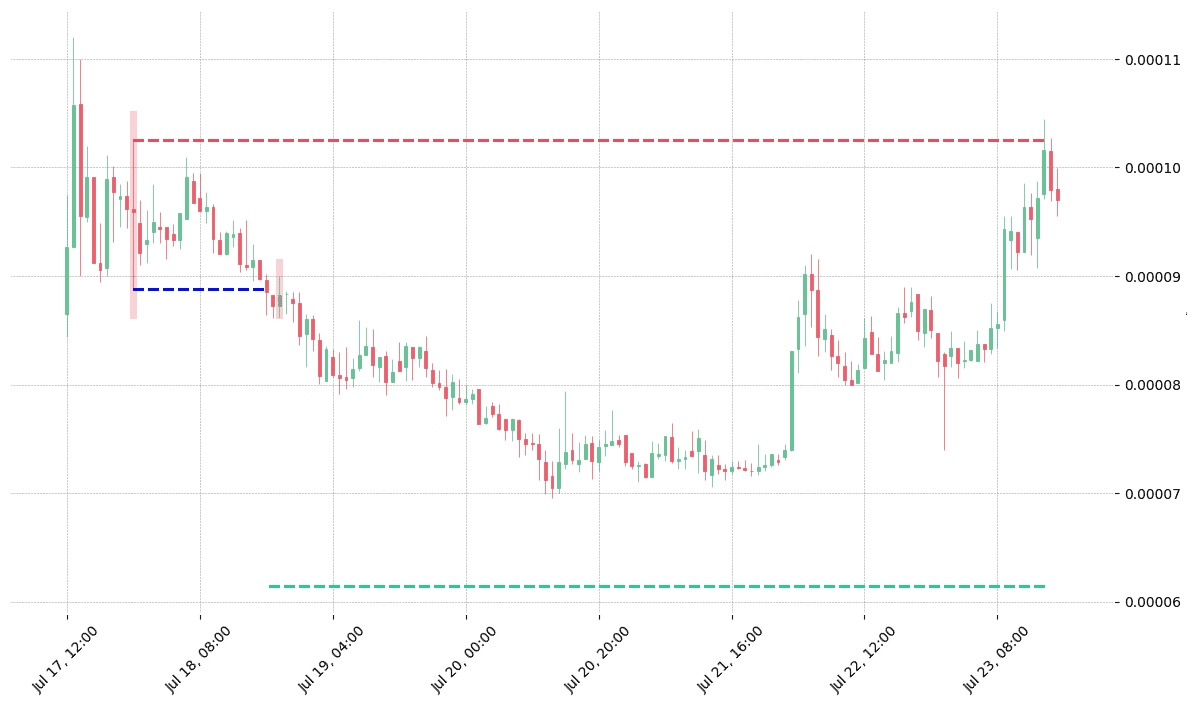
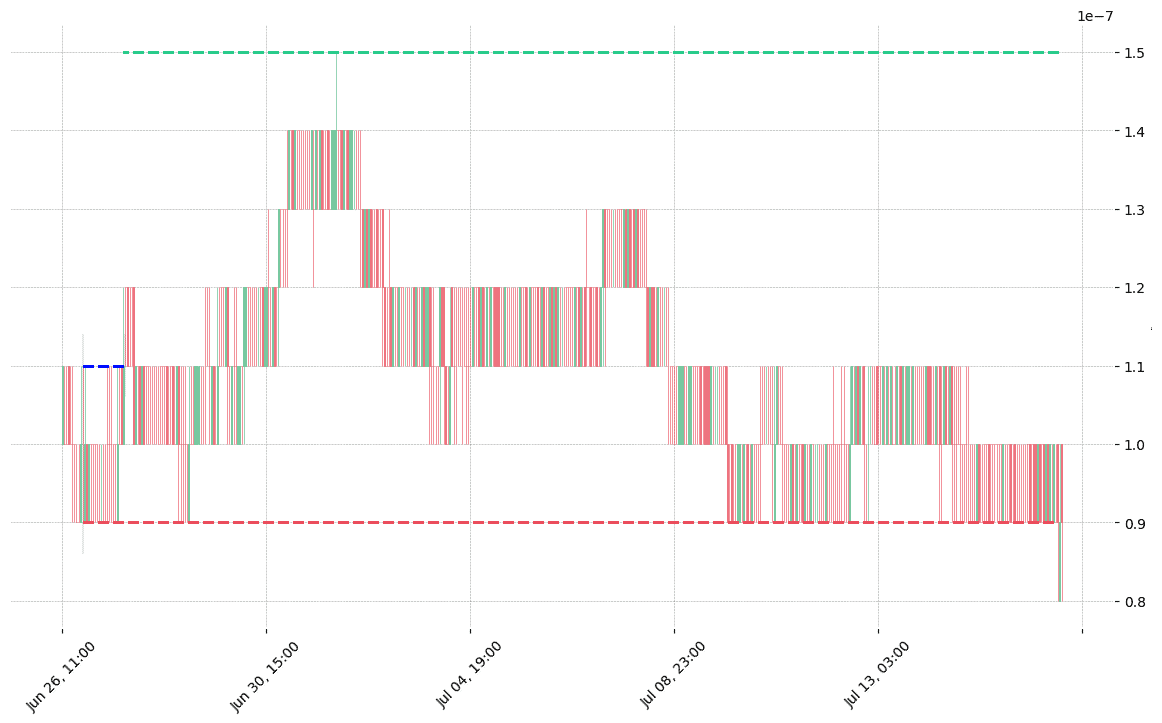
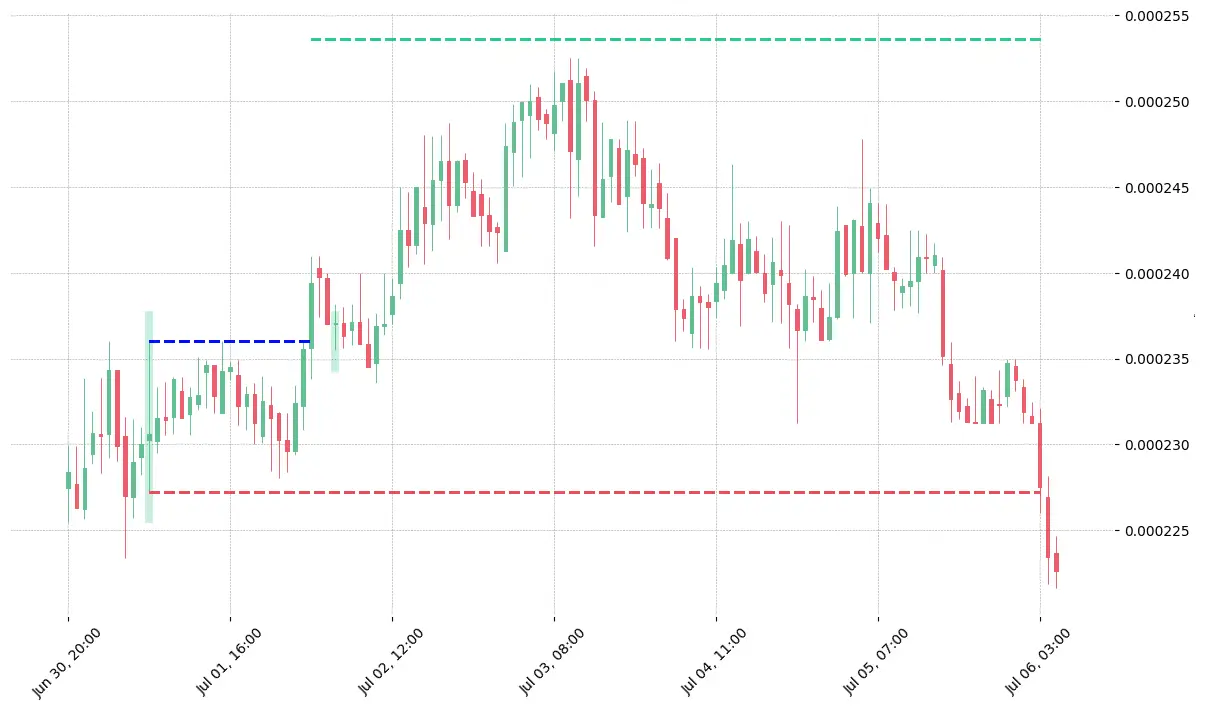
Looking to learn more about this pattern?
You should take a look at Joe Marwood's online course. In his course, he backtested the 26 main candlestick patterns before to summarize which one is THE best pattern. I really liked his course and you shouldn't miss it!
Click here to signup to his "Candlestick Analysis For Professional Traders" course now!

 Good Trading requires the Best Charting Tool!
Good Trading requires the Best Charting Tool!


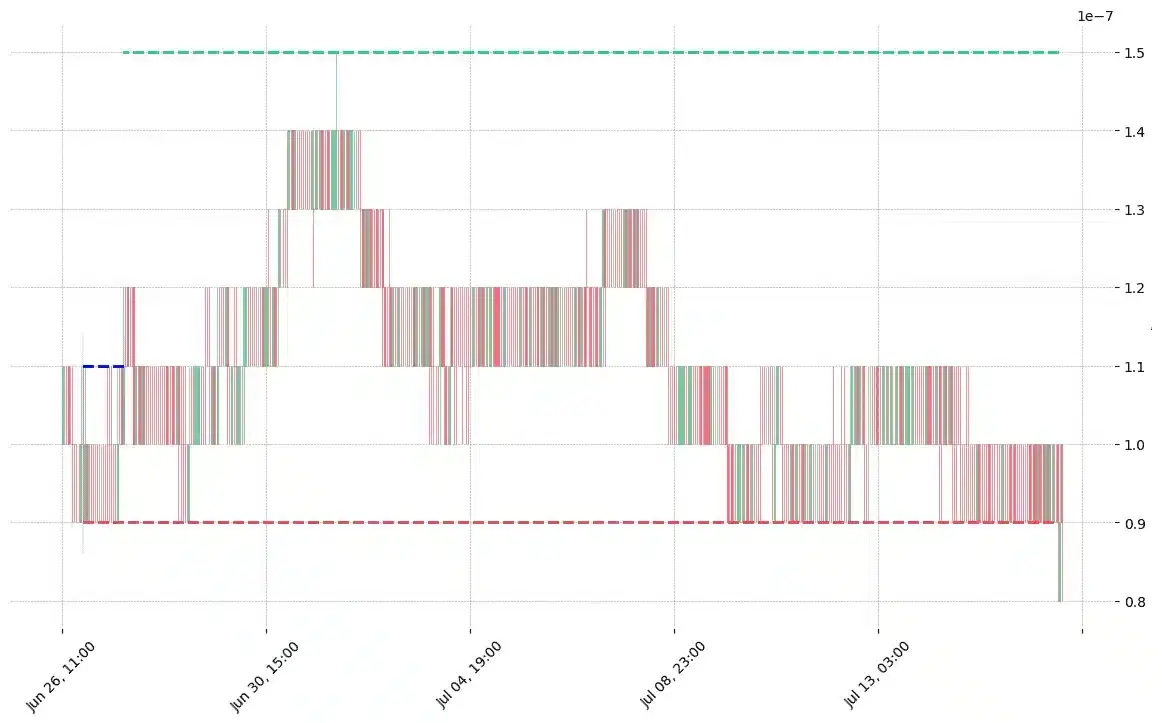
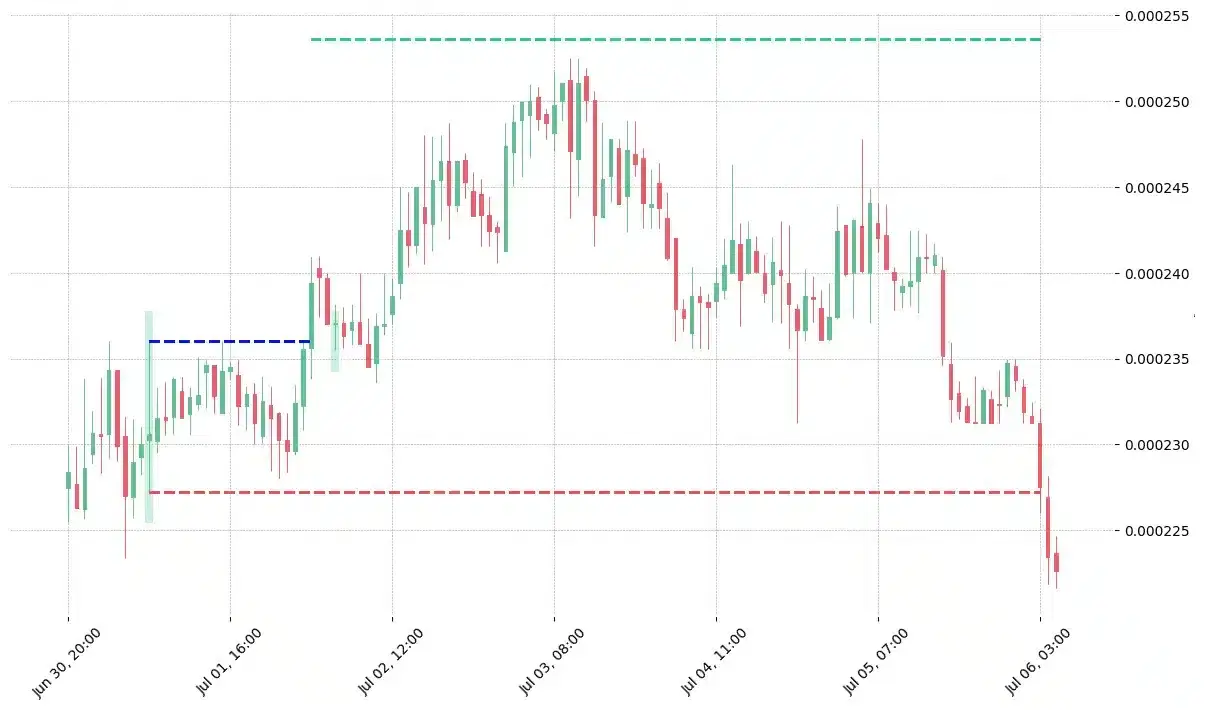
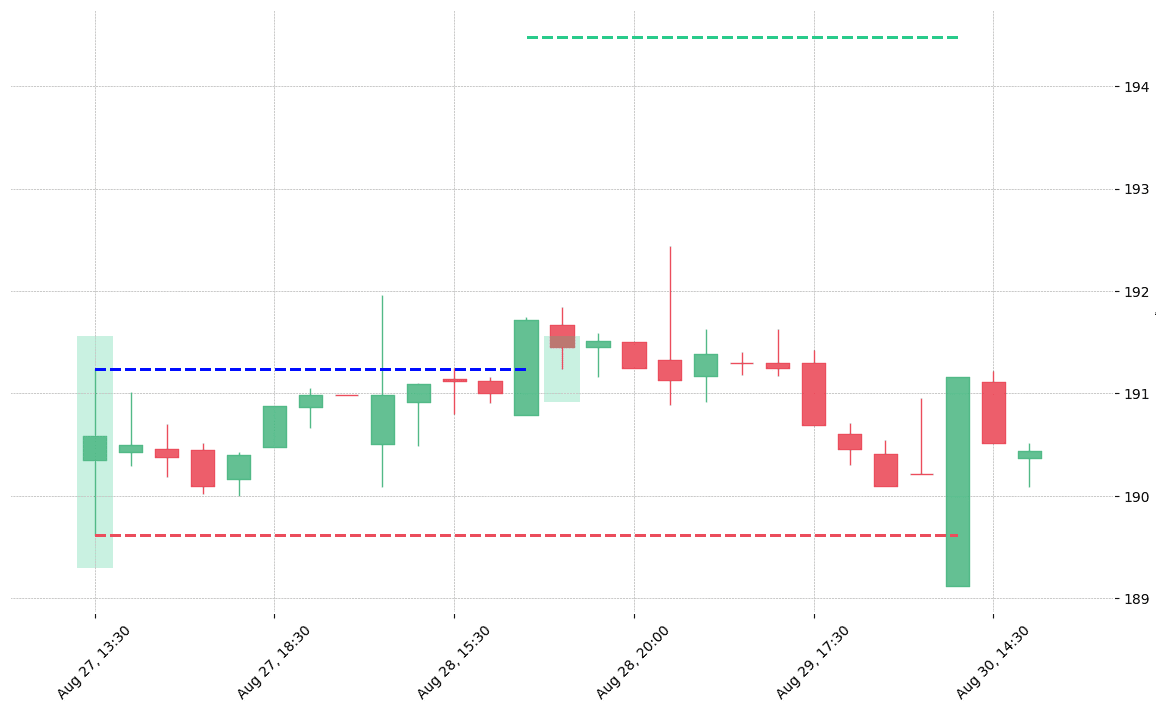
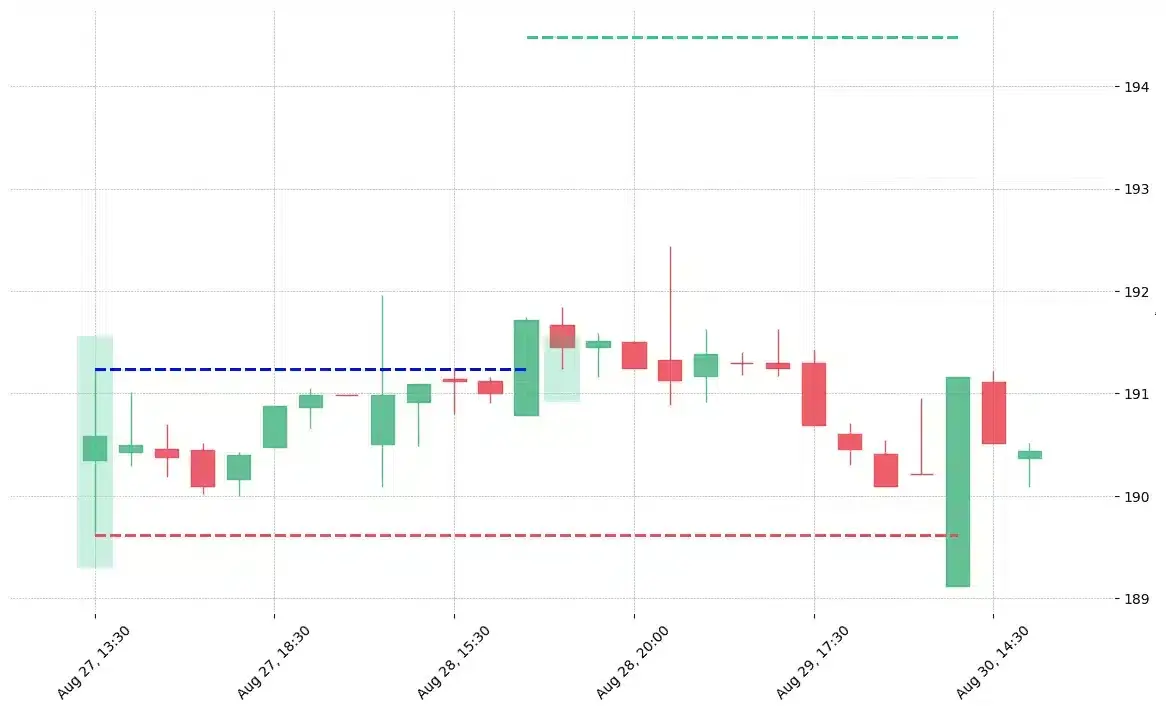
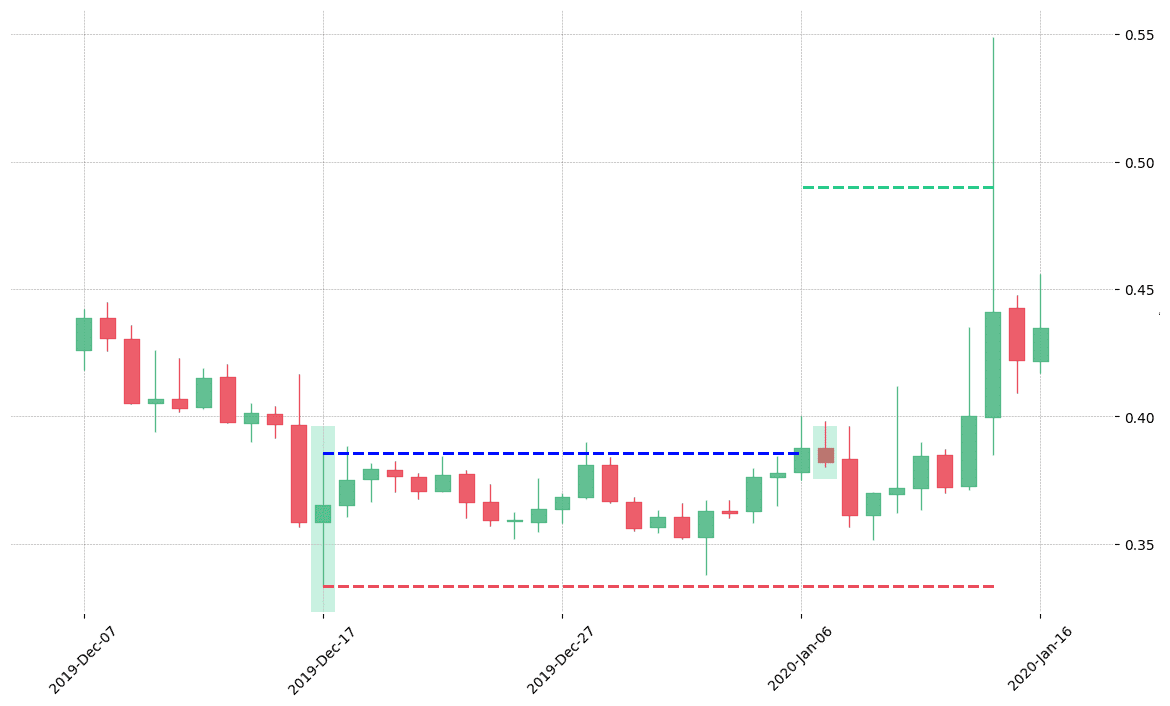
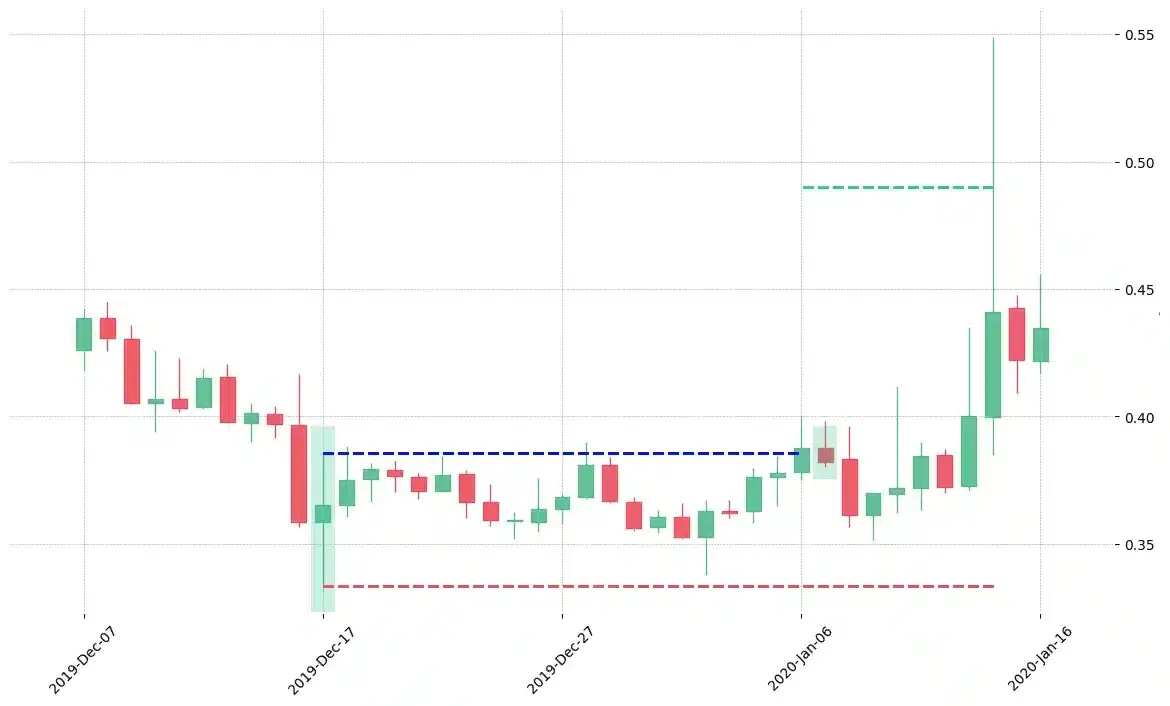
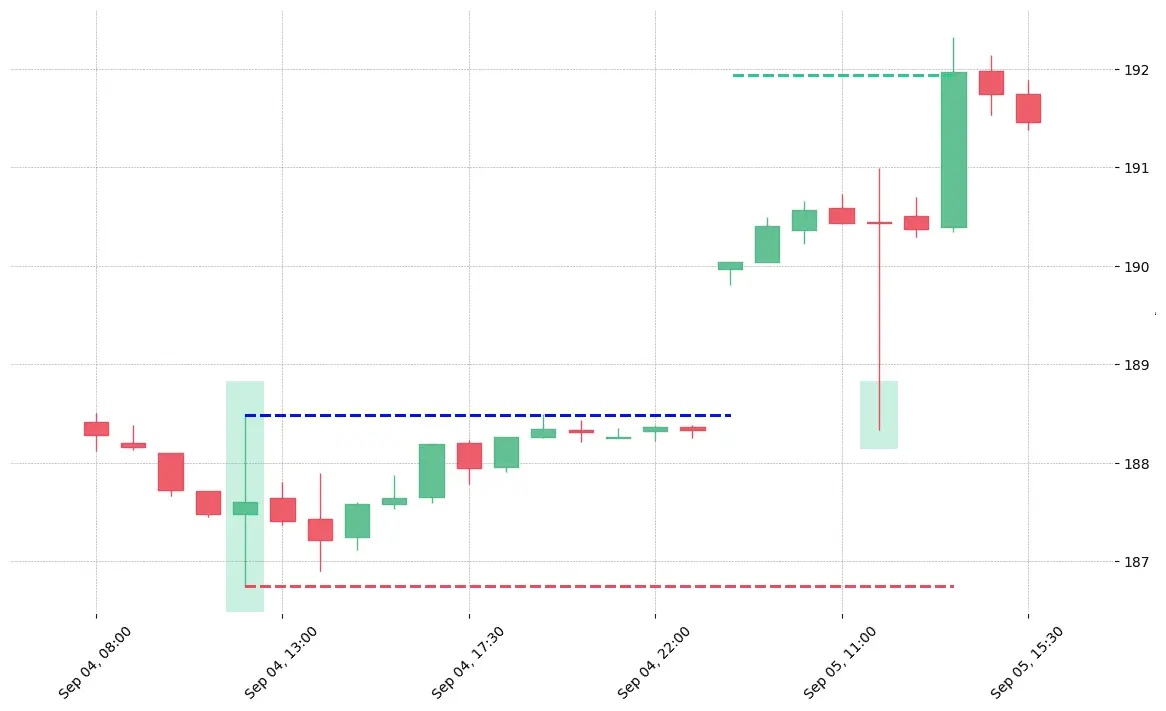

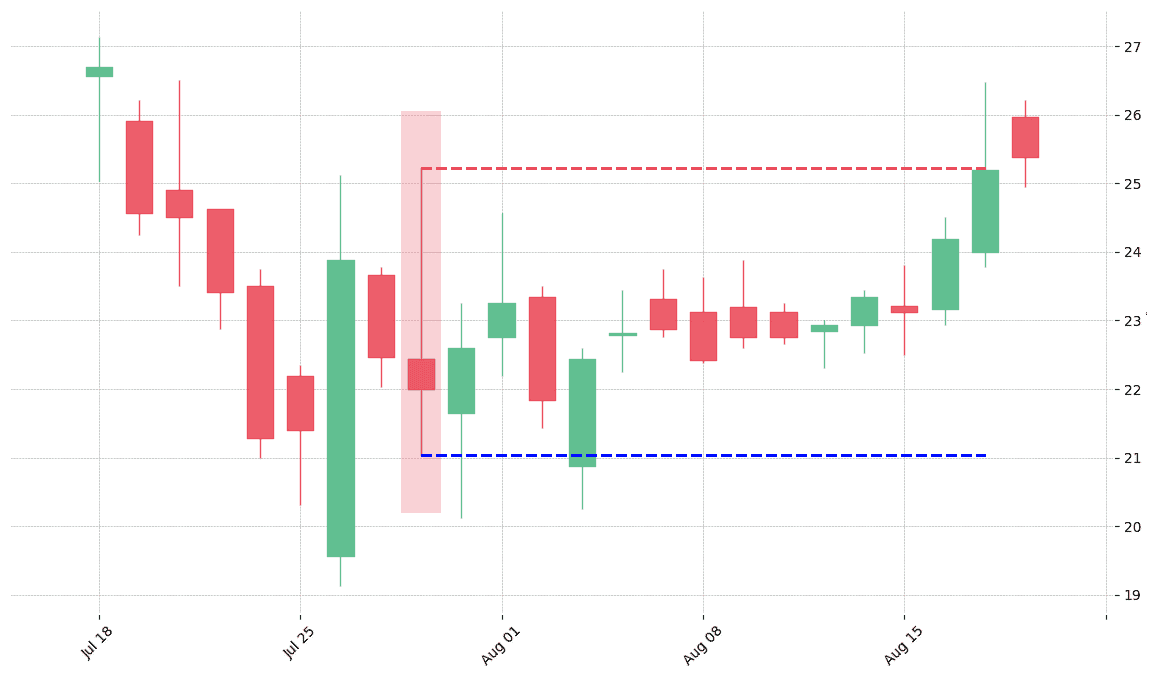


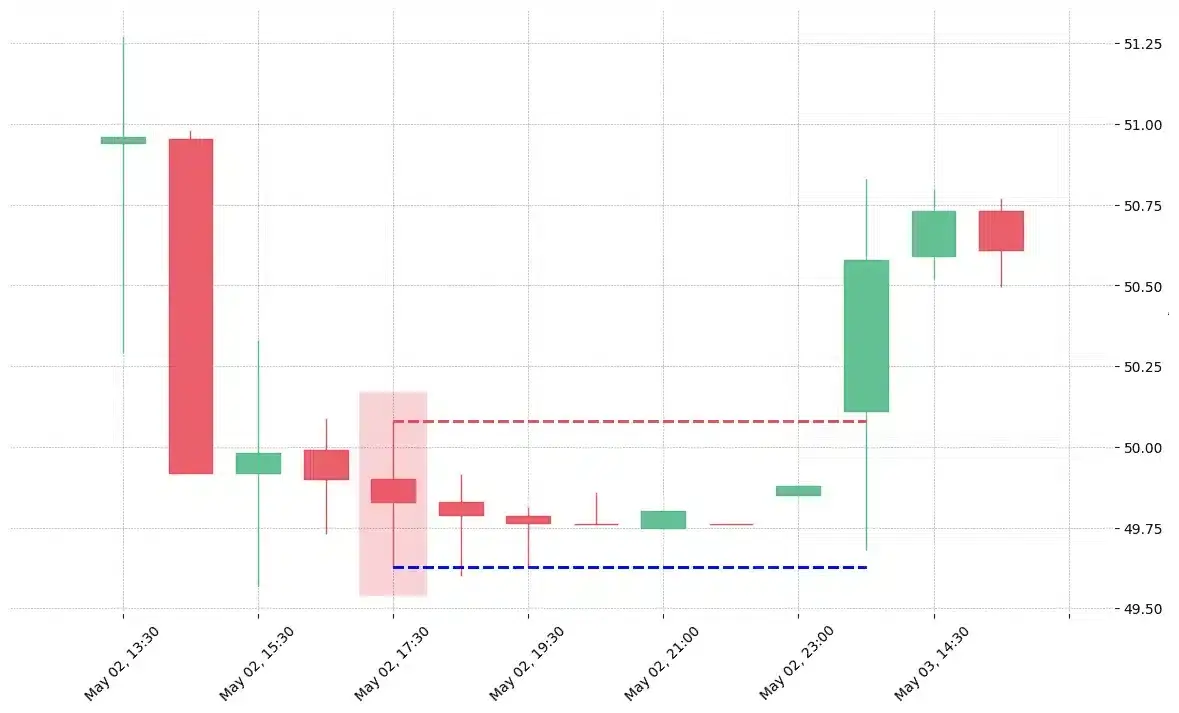
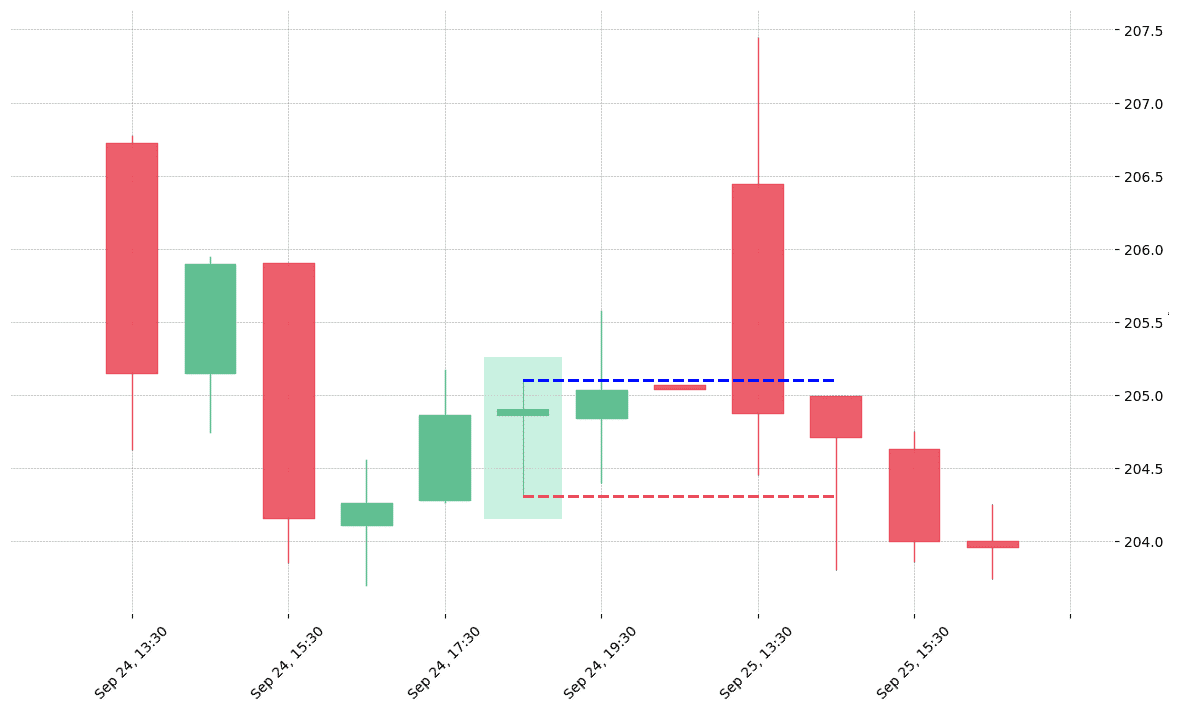
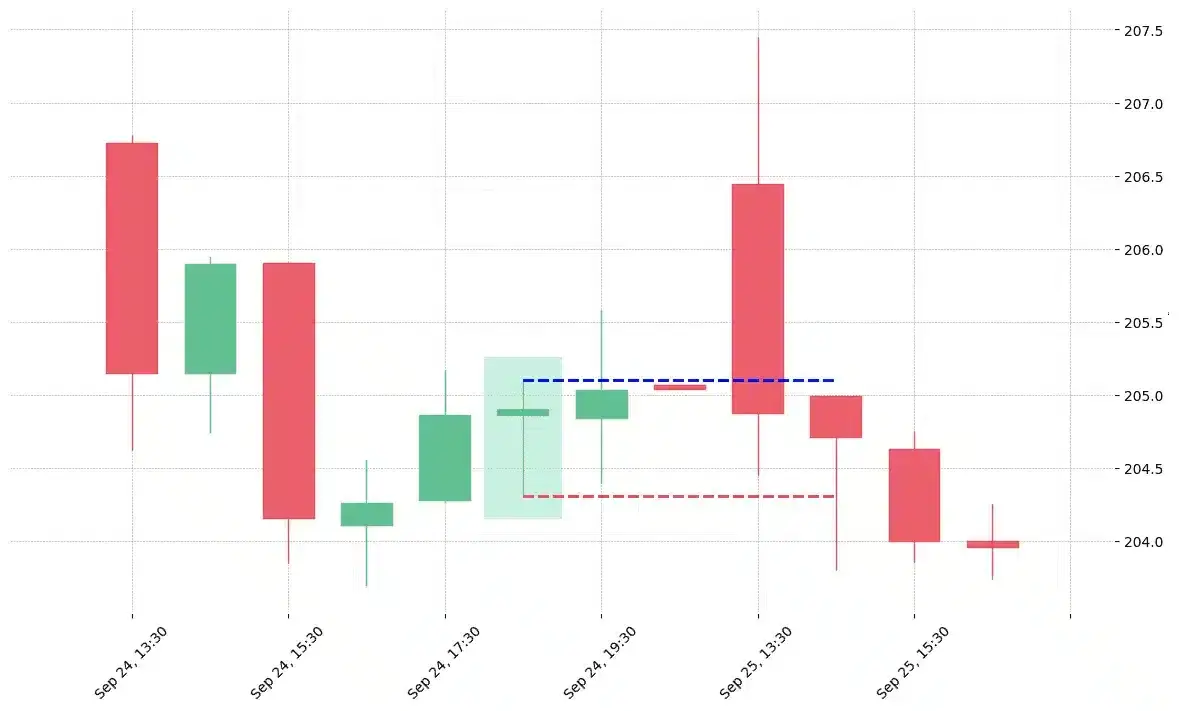
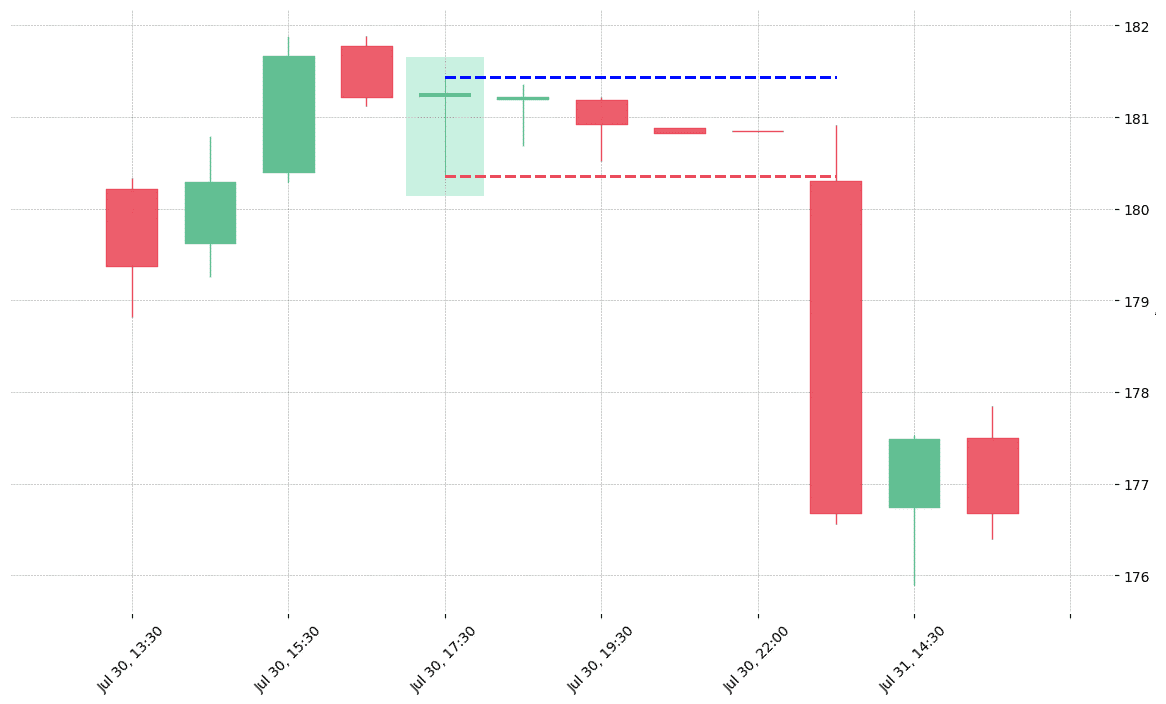
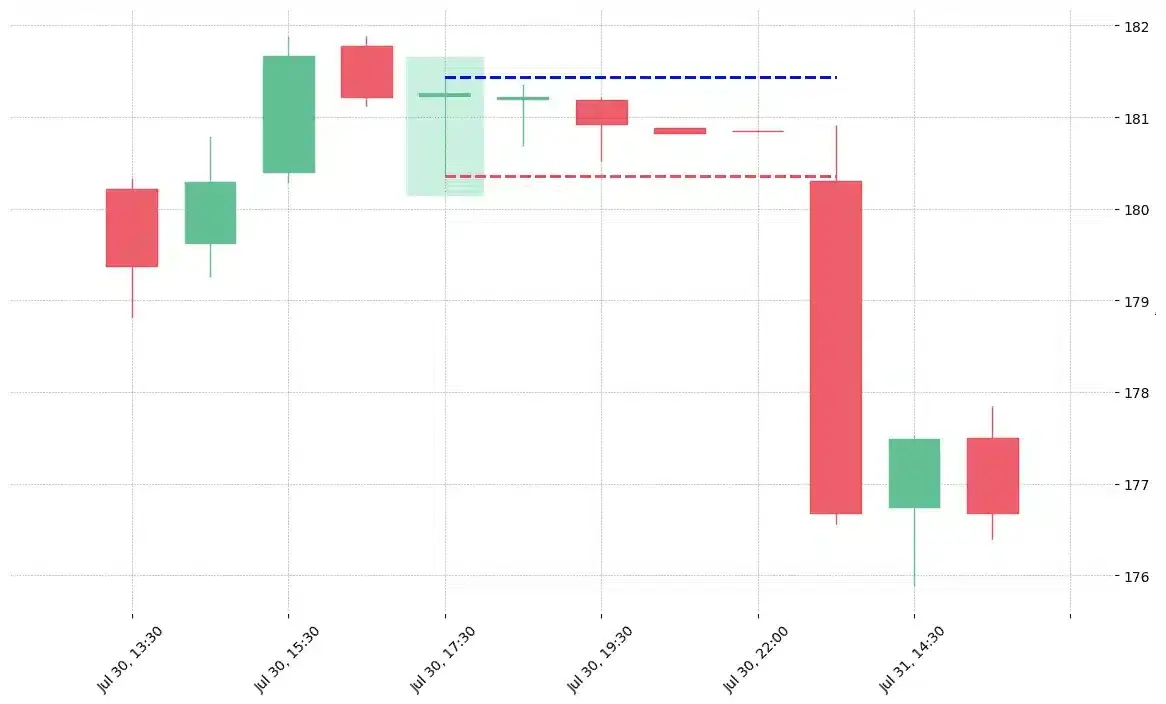


 We loved Marwood Research’s course “Candlestick Analysis For Professional Traders“. Do you want to follow a great video course and deep dive into 26 candlestick patterns (and compare their success rates)? Then make sure to check this course!
We loved Marwood Research’s course “Candlestick Analysis For Professional Traders“. Do you want to follow a great video course and deep dive into 26 candlestick patterns (and compare their success rates)? Then make sure to check this course!